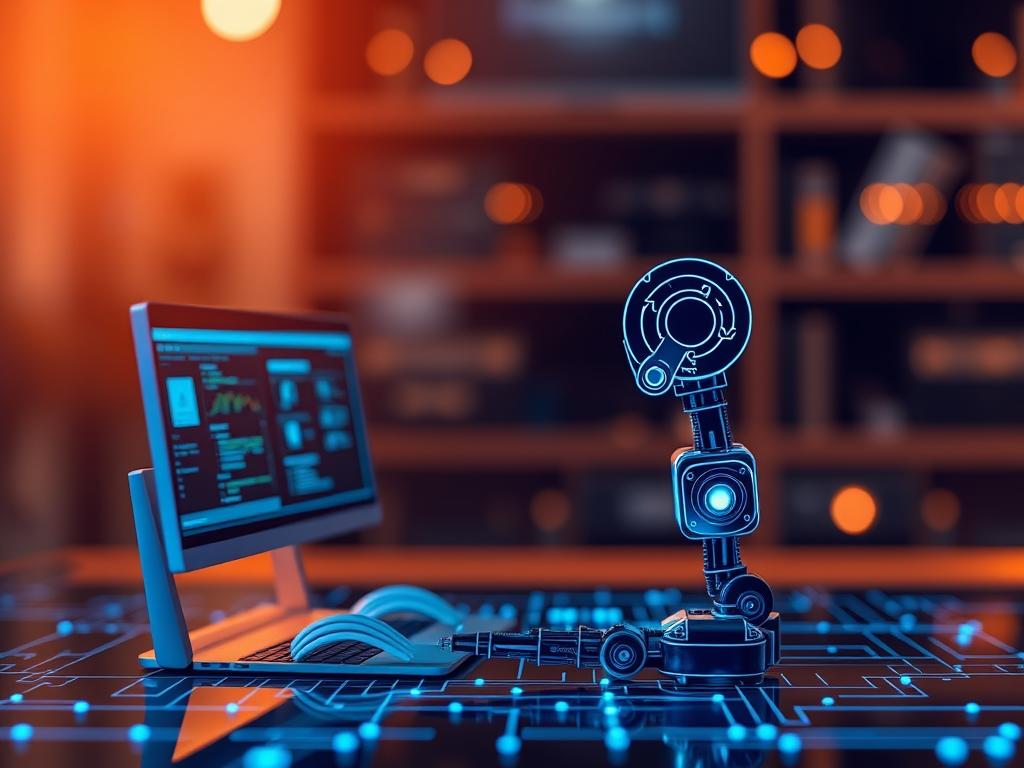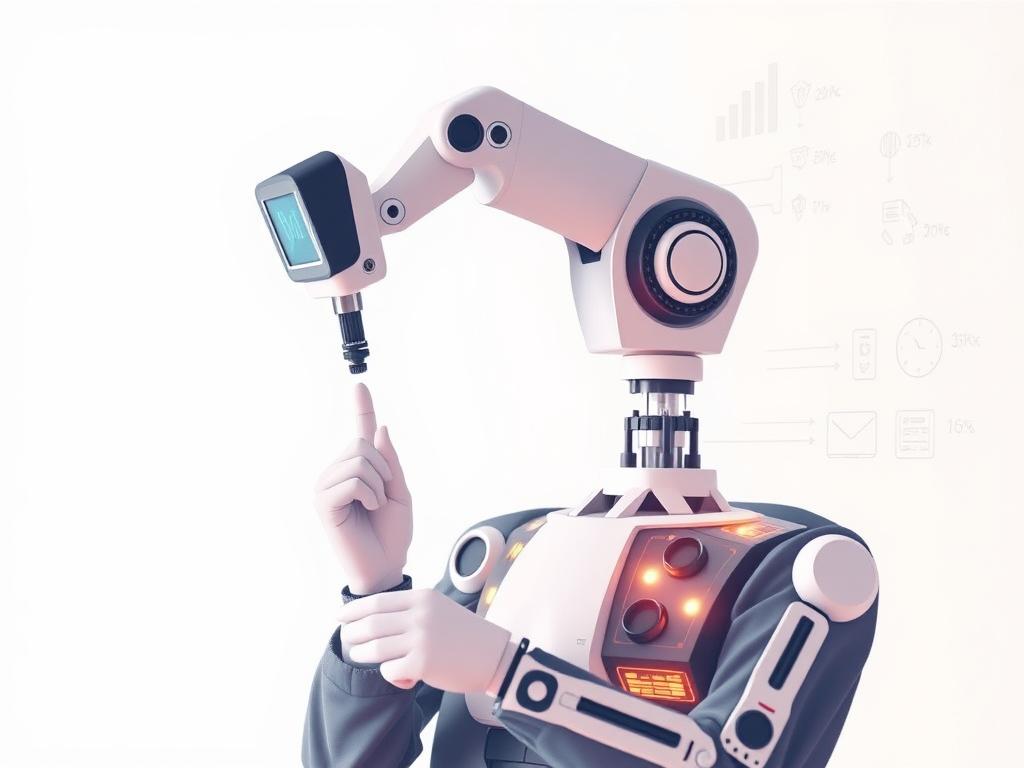In today’s fast-paced world, businesses are continuously seeking ways to improve efficiency, reduce costs, and enhance customer experience. One solution that has been gaining tremendous momentum is AI-powered automation in business. This phenomenon is reshaping industries by introducing intelligent systems that can perform repetitive, complex, or data-driven tasks better and faster than humans. From streamlining supply chains to personalizing marketing campaigns, AI-powered automation is no longer a futuristic concept but a present-day reality transforming how companies operate.
At its core, AI-powered automation uses artificial intelligence technologies such as machine learning, natural language processing, and computer vision to automate processes that traditionally required human intervention. What makes this type of automation powerful is its ability to learn and adapt over time, meaning businesses can optimize their operations continually without constant programming updates. This has led to significant improvements in productivity and innovation across sectors including finance, healthcare, retail, and manufacturing.
How AI-Powered Automation Enhances Business Efficiency

One of the most significant benefits of AI-powered automation in business is efficiency. By automating routine tasks, employees are freed to focus on more strategic and creative work. For example, chatbots powered by natural language processing can handle countless customer queries simultaneously, reducing wait times and improving satisfaction without requiring a large customer service team. Similarly, AI-enabled robotic process automation (RPA) can handle data entry, invoice processing, and compliance reporting with minimal errors.
To give you a clearer picture, here is a simple table highlighting common business tasks and how AI-powered automation enhances them:
| Business Task | Traditional Approach | AI-Powered Automation | Benefits |
|---|---|---|---|
| Customer Support | Human agents responding one-by-one | Chatbots and virtual assistants handling thousands of queries | Faster response, 24/7 availability, reduced labor costs |
| Data Analysis | Manual report generation | AI analyzes data and generates insights automatically | Accuracy, speed, better decision-making |
| Inventory Management | Manual tracking and restocking | Predictive analytics automates stock replenishment | Prevents stockouts, reduces overstock, saves money |
| Marketing Campaigns | Generic messaging to broad audiences | Personalized content based on user data | Higher engagement, improved conversion rates |
Key AI Technologies Driving Automation
Understanding the core technologies behind AI-powered automation in business helps appreciate its potential. There are four primary AI technologies driving this transformation:
- Machine Learning: Enables systems to learn patterns from data and make predictions or decisions without explicit programming.
- Natural Language Processing (NLP): Allows machines to understand and respond to human language, powering chatbots and voice assistants.
- Computer Vision: Lets AI interpret visual information such as images and videos, useful in quality control and surveillance.
- Robotic Process Automation (RPA): Focuses on automating repetitive, rule-based tasks using AI to increase flexibility and intelligence.
Together, these technologies provide businesses with a toolkit to automate almost any process, regardless of complexity.
Real-World Applications and Impact
AI-powered automation in business is no longer limited to tech companies or large enterprises; it is becoming accessible and valuable to businesses of all sizes. Here are some examples showing how AI-powered automation is making an impact:
1. Enhancing Customer Experiences
Personalization is key in modern marketing, and AI-powered automation enables companies to deliver the right message at the right time. Digital platforms analyze customer behavior, preferences, and purchase history to tailor promotions and recommendations automatically. When customers feel understood and valued, loyalty increases, driving long-term revenue.
2. Streamlining Operations
In industries like manufacturing and logistics, AI-powered automation optimizes workflows by predicting maintenance needs, managing inventory through demand forecasting, and automating quality assurance. This downturns operational delays and minimizes wastage.
3. Improving Financial Management
Finance teams deploy AI to automate tasks such as fraud detection, risk assessment, and compliance checks. Financial forecasting models powered by machine learning provide more accurate predictions helping businesses manage budgets more effectively.
Challenges and Considerations in Adopting AI-Powered Automation
While the benefits are compelling, implementing AI-powered automation in business does come with challenges. First, data quality and availability are critical since AI systems require large datasets to learn accurately. Businesses must also address privacy concerns and comply with regulations such as GDPR when handling customer data.
Another consideration is workforce impact. Automation could displace some jobs, particularly in routine manual roles, creating the need for reskilling and strategic workforce planning. Companies must balance automation benefits while supporting employees through these transitions.
Finally, businesses face technical challenges integrating AI-powered tools with existing systems, requiring investments in infrastructure and expertise. However, with careful planning, most organizations find these hurdles manageable.
Steps to Successfully Implement AI-Powered Automation
To maximize success, businesses should follow these best practices:
- Identify high-value processes: Start with tasks that are repetitive, time-consuming, and prone to error.
- Ensure data readiness: Clean, structured, and accessible data is vital for AI systems.
- Choose the right technology: Select AI tools that fit the company’s specific needs and scale appropriately.
- Involve stakeholders: Engage teams early, communicate benefits, and prepare employees for changes.
- Monitor and optimize: Continuously analyze automation outcomes and improve algorithms.
The Future of AI-Powered Automation in Business
Looking forward, AI-powered automation in business is set to become even more sophisticated and ubiquitous. Emerging trends include hyperautomation, wherein businesses combine AI, RPA, machine learning, and analytics to automate entirely end-to-end workflows. As AI systems evolve, they will not only execute tasks but also suggest strategies and identify new business opportunities.
Moreover, the convergence of AI with other technologies such as the Internet of Things (IoT) and blockchain promises to unlock new levels of automation and trust. For example, smart factories may seamlessly coordinate production with supply delivery autonomously, reducing costs and enabling faster innovation cycles.
Summary Table: Benefits vs. Challenges
| Benefits | Challenges |
|---|---|
| Increased efficiency and productivity | Data quality and privacy concerns |
| Improved customer experience and personalization | Potential job displacement |
| Better decision-making using real-time insights | Integration with legacy systems |
| Cost savings through reduced errors and manual labor | Need for technical skills and investments |
Conclusion

AI-powered automation in business represents a profound shift in how work gets done, enabling organizations to operate more efficiently, serve customers better, and innovate faster. While challenges around data, workforce impact, and implementation exist, the benefits far outweigh the risks when automation is adopted thoughtfully. As AI technologies continue to evolve, this trend will only accelerate, shaping the future landscape of business and redefining competitive advantage. Embracing AI-powered automation today is not just an option but a necessity for companies aiming to thrive in tomorrow’s economy.




